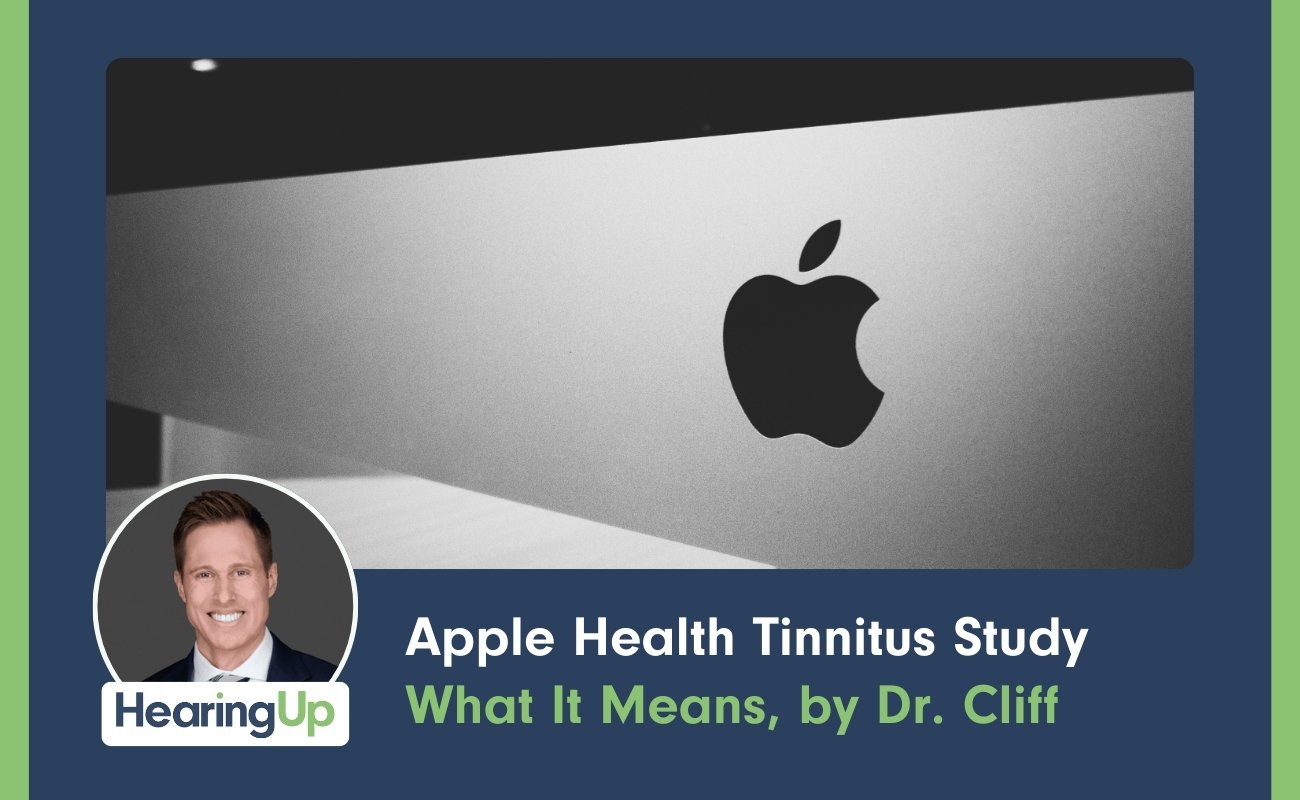Bluetooth technology has revolutionized how we connect our devices, especially in the realm of hearing aids. We've witnessed incredible advancements since the first Bluetooth headset hit the market in 1999. Back then, the technology was limited, with short transmission distances and slow data speeds.
Today, Bluetooth has become ubiquitous in electronic devices, including hearing aids. Since 2014, this wireless technology has enabled users to stream audio directly from smartphones to their hearing aids. The evolution hasn't stopped there - we now have four distinct types of Bluetooth in hearing aids, each offering unique benefits and capabilities for users.
Bluetooth technology emerged as a wireless data transmission method using ultra-high-frequency radio waves. Its debut in 1999 marked a significant shift away from cable-dependent connections. Early Bluetooth had limited capabilities, with slow data transfer speeds and a short range of about 10 meters.
Over the past few decades, Bluetooth has seen substantial improvements. Its capabilities have expanded, leading to widespread adoption across various electronic devices. By 2024, most gadgets incorporate some form of Bluetooth connectivity, making it a near-universal feature in modern electronics.
Hearing aids first integrated Bluetooth technology in 2014. This innovation allowed users to stream audio directly from smartphones to their hearing devices. Users could now listen to music, audiobooks, podcasts, videos, and take phone calls through their hearing aids. Since then, hearing aid Bluetooth technology has evolved, with four distinct types now available:
Each type offers unique features and compatibility with different devices. MFi works with Apple products, ASHA with some Android phones, Bluetooth Classic with a wide range of devices, and LE Audio brings improved sound quality and battery efficiency.
This wireless technology, designed for Apple devices, was the first Bluetooth option for hearing aids. It conserves battery life by avoiding constant connections. However, it has limitations in range and audio quality. The signal struggles to pass through walls and only works with iPhones and iPads.
Google developed this protocol to extend Bluetooth compatibility to Android devices. While it allows Android users to stream audio to their hearing aids, it's not widely supported. Many Android phones lack this feature, and its reliability and sound quality are often subpar.
This widely-adopted form of Bluetooth offers improved compatibility across devices. It provides better audio quality and more reliable data transmission compared to earlier options. Hearing aid users can connect to various Bluetooth-enabled devices, including both Apple and Android smartphones. It also enables hands-free phone calls.
The newest Bluetooth technology for hearing aids brings significant advancements. It offers superior sound quality at lower bit rates, reducing battery drain. This is crucial for small devices like hearing aids. It also supports multiple simultaneous connections, expanding its versatility.
Phonak has made significant strides in Bluetooth technology, moving from version 4.2 to 5.3 in their latest hearing aids. This upgrade brings enhanced connectivity and improved features for users.
The Infinio and Sphere hearing aids now incorporate Bluetooth 5.3, offering users the ability to pair with up to eight devices. Two active connections can be maintained simultaneously, providing greater flexibility in device management.
With the latest Bluetooth update, Phonak has doubled the wireless transmission range from 30 to 60 feet. This improvement ensures a more stable audio connection, reducing cut-outs and interruptions for users on the move.
Phonak's new Smart Own Voice Pickup feature uses intelligent technology to select the clearest audio input during hands-free calls. The system can switch between hearing aids mid-call to ensure optimal voice clarity for the person on the other end of the line.
Phonak's latest app update brings exciting changes. Version 6.9 of the My Phonak app now offers enhanced features. We can check our hearing aid battery life estimates, giving us a clear picture of remaining usage time. This update proves especially useful for planning our day around our devices' power needs.
The new app version introduces customization options for BiCROS hearing aid users. We can now adjust the balance of sound coming from our non-hearing side, fine-tuning our listening experience. This feature extends compatibility to older Paradise BiCROS models, broadening its accessibility to more users.
A standout addition is the GPS locator function. This feature addresses a common concern among hearing aid wearers - misplacing their devices. Using the My Phonak app, you can now track your hearing aids' location, providing peace of mind and potentially saving time and money on replacements.
Hey guys, Cliff Olson, Doctor of Audiology and founder of Applied Hearing Solutions in Phoenix, Arizona, and in this video I'm talking about the four different types of Bluetooth and how to decide which one is right for you.
Bluetooth started as a way to transmit data wirelessly over short distances using an ultra high frequency radio wave, which eliminated the need to always use cables. In the grand scheme of thing, it really hasn't been around that long, but the first Bluetooth headset was released officially in 1999. I don't know what you were doing back in 1999, but I was still a junior in high school and you probably didn't need hearing aids yet.
Of course, this earliest form of Bluetooth could not transmit data that quickly and it could only transmit it over a very short distance, approximately 10 meters at the time, which significantly limited its capabilities.
Fortunately, Bluetooth technology has improved greatly over the past several decades, and it has gained widespread adoption to the point where pretty much every electronic device out there has some form of Bluetooth inside of it. Of course, it was just a matter of time before this Bluetooth technology worked its way inside of hearing aids, and it did that back in 2014.
This was great because it allowed you to stream audio directly from your smartphone into your hearing aids. This included music, audio, books, podcasts, YouTube videos, and even phone calls. But over the past 10 years, we've gone from one form of Bluetooth inside of hearing aids to now four different types of Bluetooth inside of hearing aids.
That's why I feel like it's time for me to explain what these different forms of Bluetooth are, so you can actually decide which one is right for you.
But before I do, do me a huge favor and hit the like button. It really helps out the channel, and if you are not, you'll subscribe to the channel with notifications turned on. Go ahead and do that as well. It is greatly appreciated and a huge shout out to Phonak for sponsoring today's video, but more on them in a little bit.
Also, let me know down in the comment section whether or not Bluetooth is an important feature for you to have inside of your hearing aids.
The first form of Bluetooth that we had was MFI, Bluetooth Low Energy Technology. This stood for made for iPhone and for several years this was the only form of Bluetooth that individuals with hearing aids had access to, and you could only stream audio from an iPhone or an iPad into a few different brands of hearing aid as the name Bluetooth.
Low energy suggests it was really good at preserving battery life because it did not maintain a constant connection between your smart device and your hearing aids. However, it was not, and still is not the best when it comes to audio streaming. That's because this form of Bluetooth is very short range and it does not pass through walls very easily and the sound quality is subpar. But the biggest problem with this form of Bluetooth is that it was only compatible with Apple devices and everyone who had an Android device was left out of all the fun.
So this led to the development of the ASHA Bluetooth protocol. The second form of Bluetooth, which stands for audio streaming for hearing aids, was an extension of Bluetooth Low Energy developed by Google in 2019. This allowed individuals with made for iPhone hearing aids to stream audio from an Android device into their ears.
Reliability, audio quality of the ASHA Bluetooth protocol is rough at best, and it's probably the least supported form of Bluetooth out there considering that not even all Android phones have this form of Bluetooth, which is why the third form of hearing aid Bluetooth called Bluetooth classic is so popular among hearing aid users.
Bluetooth classic allowed hearing aid users to connect their hearing aids up to pretty much any wireless device out there, whether it was an Apple device, Android device, or anything else that had Bluetooth classic. That's because Bluetooth classic is the most widely used form of Bluetooth in the entire world. Not to mention it offers better sound quality and more reliable data transmission compared to Bluetooth low energy or the ASHA Bluetooth protocol.
It was also the first form of Bluetooth that allowed you to go completely hands free when talking on the phone. That's why Phonak. Today's video sponsor upgraded their Bluetooth classic from version 4.2 to version 5.3 inside of their Infinio and sphere Infinio hearing aids, which added a lot of new features.
While you can still pair your Phonak hearing aids up to eight different Bluetooth devices with two active connections at the same time. This updated version of Bluetooth Classic has allowed Phonak to significantly increase their signal strength for greater wireless transmission going from a distance of 30 feet to 60 feet without the audio cutting in and out on you.
This update is also allowed for something called Smart own Voice Pickup. This is when you're hands free talking on the phone and your hearing aids are picking up your voice. The hearing aids can identify which one of the hearing aids has a cleaner signal of your own voice to send off to the person on the other end of the line, and it can do this in the middle of a phone call. So if your voice is being picked up better in your right ear to start off the phone call, but then it's being picked up better in your left ear, it can make that switch automatically for you to make sure that the person on the other end of the line hears you really well.
Another big feature improvement that Phonak made with this new update is their My Phonak app version 6.9. This updated version of the My Phonak app is better than ever. Now. You still have the ability to use the app to:
But you can also do several new things such as:
With all the improvements that phone app has made to their my phone app app, it is no surprise why it now has 4.4 stars inside of the Google Play Store and 4.2 stars in the App store. This makes the MyPhonak app one of the most popular hearing aid apps among hearing aid users.
Now, if you've been counting along with me, you know that that is three different forms of Bluetooth, but this fourth form of Bluetooth is a brand new form and it's called audio. And this new form of Bluetooth is loaded with a ton of cool features powered by the new low complexity communication codec or LC3 for short.
It allows for a significant upgrade in streaming sound quality at lower bit rates. As you can see on this bar graph in comparison to the old SBC codec that could only go as low as 240 kilobits per second, but significantly degraded the sound quality.
Not only does LE Audio Bluetooth give you significantly better sound quality than the other forms of Bluetooth, but it can do this with a much lower battery drain, which is critical when it comes to really small electronic devices like hearing aids, but there's more LE Audio.
Bluetooth also allows for multiple synchronous connections. Basically, this means that you can share the audio from one smart device to multiple other devices like hearing aids or headphones. Imagine this, you and your spouse are flying across the country and you both wanna watch the same movie on your tablet. Well, if that tablet is equipped with Le Audio Bluetooth, you could use your hearing aids and they could use their hearing aids or their earbuds that have LE Audio and you could both tap into that tablet at the exact same time and listen to the movie together.
But perhaps the most exciting thing about LE Audio Bluetooth is its ability to give you access to something called Auracast Broadcast audio or cast broadcast audio allows you to stream audio from a public venue like a museum, a Broadway show, church, movie theater, or even sports bar directly into both of your hearing aids.
And because this feature will be available to everyone, not just hearing aid users, we should expect to see a significant amount of public venues having Auracast broadcast transmitters for you to gain access to their audio and Phonak's new ERA wireless chip inside of their Infinio and sphere, Infinio hearing aids or or a cast ready when it comes to all audio Bluetooth.
The only thing that we're really waiting for is the rest of the world to catch up with the hearing aid industry because as of right now, you cannot find that many other electronic devices like smartphones, tablets, laptops, and TVs that are equipped with LE Audio Bluetooth. But when the rest of the consumer electronics world actually catches up, you will start to see LE Audio Bluetooth as being the gold standard.
Alright, so let's go ahead and do a quick recap of these four different types of Bluetooth connectivity:
I'm happy to say that with a decade of hearing aid Bluetooth experience, we have made significant strides forward when it comes to this form of wireless connectivity, and the best part is it continues to get better and better, and while chances are 10 years from now, the Bluetooth connectivity will be even better than what we have today. It's really exciting to see how far we've come and how useful Bluetooth can be in your hearing aids.
So I've gotta say it is definitely an exciting time to be a hearing aid user if Bluetooth connectivity is important to you.It is crazy to see how far Hearing Aid Bluetooth has come.
Hey guys, Cliff Olson, Doctor of Audiology and founder of Applied Hearing Solutions in Phoenix, Arizona, and in this video I'm talking about the four different types of Bluetooth and how to decide which one is right for you.
Bluetooth started as a way to transmit data wirelessly over short distances using an ultra high frequency radio wave, which eliminated the need to always use cables. In the grand scheme of thing, it really hasn't been around that long, but the first Bluetooth headset was released officially in 1999. I don't know what you were doing back in 1999, but I was still a junior in high school and you probably didn't need hearing aids yet.
Of course, this earliest form of Bluetooth could not transmit data that quickly and it could only transmit it over a very short distance, approximately 10 meters at the time, which significantly limited its capabilities.
Fortunately, Bluetooth technology has improved greatly over the past several decades, and it has gained widespread adoption to the point where pretty much every electronic device out there has some form of Bluetooth inside of it. Of course, it was just a matter of time before this Bluetooth technology worked its way inside of hearing aids, and it did that back in 2014.
This was great because it allowed you to stream audio directly from your smartphone into your hearing aids. This included music, audio, books, podcasts, YouTube videos, and even phone calls. But over the past 10 years, we've gone from one form of Bluetooth inside of hearing aids to now four different types of Bluetooth inside of hearing aids.
That's why I feel like it's time for me to explain what these different forms of Bluetooth are, so you can actually decide which one is right for you.
But before I do, do me a huge favor and hit the like button. It really helps out the channel, and if you are not, you'll subscribe to the channel with notifications turned on. Go ahead and do that as well. It is greatly appreciated and a huge shout out to Phonak for sponsoring today's video, but more on them in a little bit.
Also, let me know down in the comment section whether or not Bluetooth is an important feature for you to have inside of your hearing aids.
The first form of Bluetooth that we had was MFI, Bluetooth Low Energy Technology. This stood for made for iPhone and for several years this was the only form of Bluetooth that individuals with hearing aids had access to, and you could only stream audio from an iPhone or an iPad into a few different brands of hearing aid as the name Bluetooth.
Low energy suggests it was really good at preserving battery life because it did not maintain a constant connection between your smart device and your hearing aids. However, it was not, and still is not the best when it comes to audio streaming. That's because this form of Bluetooth is very short range and it does not pass through walls very easily and the sound quality is subpar. But the biggest problem with this form of Bluetooth is that it was only compatible with Apple devices and everyone who had an Android device was left out of all the fun.
So this led to the development of the ASHA Bluetooth protocol. The second form of Bluetooth, which stands for audio streaming for hearing aids, was an extension of Bluetooth Low Energy developed by Google in 2019. This allowed individuals with made for iPhone hearing aids to stream audio from an Android device into their ears.
Reliability, audio quality of the ASHA Bluetooth protocol is rough at best, and it's probably the least supported form of Bluetooth out there considering that not even all Android phones have this form of Bluetooth, which is why the third form of hearing aid Bluetooth called Bluetooth classic is so popular among hearing aid users.
Bluetooth classic allowed hearing aid users to connect their hearing aids up to pretty much any wireless device out there, whether it was an Apple device, Android device, or anything else that had Bluetooth classic. That's because Bluetooth classic is the most widely used form of Bluetooth in the entire world. Not to mention it offers better sound quality and more reliable data transmission compared to Bluetooth low energy or the ASHA Bluetooth protocol.
It was also the first form of Bluetooth that allowed you to go completely hands free when talking on the phone. That's why Phonak. Today's video sponsor upgraded their Bluetooth classic from version 4.2 to version 5.3 inside of their Infinio and sphere Infinio hearing aids, which added a lot of new features.
While you can still pair your Phonak hearing aids up to eight different Bluetooth devices with two active connections at the same time. This updated version of Bluetooth Classic has allowed Phonak to significantly increase their signal strength for greater wireless transmission going from a distance of 30 feet to 60 feet without the audio cutting in and out on you.
This update is also allowed for something called Smart own Voice Pickup. This is when you're hands free talking on the phone and your hearing aids are picking up your voice. The hearing aids can identify which one of the hearing aids has a cleaner signal of your own voice to send off to the person on the other end of the line, and it can do this in the middle of a phone call. So if your voice is being picked up better in your right ear to start off the phone call, but then it's being picked up better in your left ear, it can make that switch automatically for you to make sure that the person on the other end of the line hears you really well.
Another big feature improvement that Phonak made with this new update is their My Phonak app version 6.9. This updated version of the My Phonak app is better than ever. Now. You still have the ability to use the app to:
But you can also do several new things such as:
With all the improvements that phone app has made to their my phone app app, it is no surprise why it now has 4.4 stars inside of the Google Play Store and 4.2 stars in the App store. This makes the MyPhonak app one of the most popular hearing aid apps among hearing aid users.
Now, if you've been counting along with me, you know that that is three different forms of Bluetooth, but this fourth form of Bluetooth is a brand new form and it's called audio. And this new form of Bluetooth is loaded with a ton of cool features powered by the new low complexity communication codec or LC3 for short.
It allows for a significant upgrade in streaming sound quality at lower bit rates. As you can see on this bar graph in comparison to the old SBC codec that could only go as low as 240 kilobits per second, but significantly degraded the sound quality.
Not only does LE Audio Bluetooth give you significantly better sound quality than the other forms of Bluetooth, but it can do this with a much lower battery drain, which is critical when it comes to really small electronic devices like hearing aids, but there's more LE Audio.
Bluetooth also allows for multiple synchronous connections. Basically, this means that you can share the audio from one smart device to multiple other devices like hearing aids or headphones. Imagine this, you and your spouse are flying across the country and you both wanna watch the same movie on your tablet. Well, if that tablet is equipped with Le Audio Bluetooth, you could use your hearing aids and they could use their hearing aids or their earbuds that have LE Audio and you could both tap into that tablet at the exact same time and listen to the movie together.
But perhaps the most exciting thing about LE Audio Bluetooth is its ability to give you access to something called Auracast Broadcast audio or cast broadcast audio allows you to stream audio from a public venue like a museum, a Broadway show, church, movie theater, or even sports bar directly into both of your hearing aids.
And because this feature will be available to everyone, not just hearing aid users, we should expect to see a significant amount of public venues having Auracast broadcast transmitters for you to gain access to their audio and Phonak's new ERA wireless chip inside of their Infinio and sphere, Infinio hearing aids or or a cast ready when it comes to all audio Bluetooth.
The only thing that we're really waiting for is the rest of the world to catch up with the hearing aid industry because as of right now, you cannot find that many other electronic devices like smartphones, tablets, laptops, and TVs that are equipped with LE Audio Bluetooth. But when the rest of the consumer electronics world actually catches up, you will start to see LE Audio Bluetooth as being the gold standard.
Alright, so let's go ahead and do a quick recap of these four different types of Bluetooth connectivity:
I'm happy to say that with a decade of hearing aid Bluetooth experience, we have made significant strides forward when it comes to this form of wireless connectivity, and the best part is it continues to get better and better, and while chances are 10 years from now, the Bluetooth connectivity will be even better than what we have today. It's really exciting to see how far we've come and how useful Bluetooth can be in your hearing aids.
So I've gotta say it is definitely an exciting time to be a hearing aid user if Bluetooth connectivity is important to you.It is crazy to see how far Hearing Aid Bluetooth has come.

Phonak Virto Infinio custom aids offer comfort and discretion but face limits in complex listening versus behind-the-ear models.
Read More
Three methods confirm hearing aid performance: test box for specs, Real Ear Measurement for accuracy, and outcome assessments for effectiveness.
Read More.jpg)
Daily shower water flushing helps prevent earwax buildup more effectively and affordably than products, though impacted wax needs professional removal.
Read More
LACE AI Pro uses AI to deliver personalized auditory training, boosting brain processing skills beyond what hearing aids alone can provide.
Read More
Hearing aid costs cover technology, expert services like Real Ear Measurement and fitting, ongoing support, and admin fees—justifying the investment.
Read More
Apple’s 160,000-person study found heart rate variability links to tinnitus severity, marking the first objective biomarker for treatment tracking.
Read More